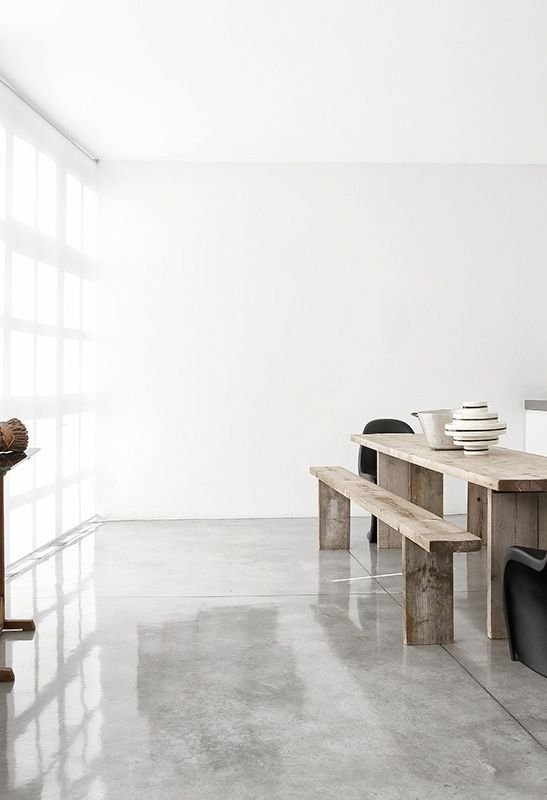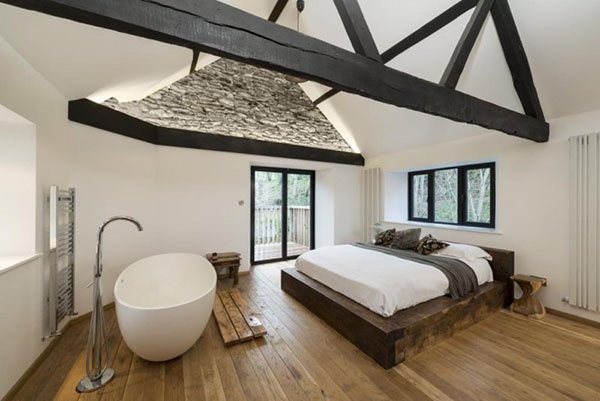Less is more…it’s really true! Today we are going to take a good look at the minimalist design style. This is a style that I really enjoy, but until now, haven’t found that it’s attainable—I’ve already changed my own mind on that, and hopefully you’ll read on and change yours too! So here it is: minimalist interior design!
Minimalism
Ah sweet simplicity…minimalism is a design style that I hope to someday achieve in my own house, but so far, I just like too much stuff! Minimalism isn’t meant to be sterile or cold, it’s actually quite warm and inviting if it’s done well. Minimalism interior design allows furniture and accessories to speak for themselves by allowing space and little distraction. Rather than filling the space with “things,” minimalism creates interest with the use of texture, color, pattern and materials.
Details
Less is certainly more in this style of interior design! But don’t let that fool you: there are plenty of details to pay attention to! You will often see little or no hardware in minimalist design. If you do, it’s often the focus of the piece and might be large or even over sized.
Natural or unstained woods are a very popular minimalist detail. Remember how I said that minimalism uses texture?! Natural woods with beautiful grains and knots are a great way to fill a space with barely anything at all!

Colors
It shouldn’t surprise anyone that minimalism’s go-to color is white. But you might be surprised to know that you can use a whole range of neutrals and even pops of color to achieve this style! Typically you would use a neutral—maybe taupe—and then pair it with one color, and use it around the space as an accent. My favorite color combination in the minimalist color palette is bright, fresh green and taupe. It’s a great way to incorporate houseplants!

Furniture & Walls
I’m going to pair minimalist furniture & walls because they really are interchangeable. Often the furniture is built into the walls or walls serve multiple purposes—it’s great! But let’s just focus on finishes here. You’re key words are bare bones. Earlier I mentioned unfinished woods, now I’m going to add to that: unfinished woods, metals and stones are HUGE in this style. If you have a cement or concrete wall and want to be a minimalist, don’t you dare cover it up! Look at all that texture and visual interest you’ve got going on!

The unfinished, rough textures could work their way into your furniture, countertops (take a look at the leather finish they are doing on granite now!), walls, accessories, open ceiling….you literally could use it anywhere in the space! Now, on that note, you don’t want everything to be full of texture, or you won’t achieve the minimalist look you’re going for. So make sure to add some very flat or smooth surfaces and plain colors into the space as well.

Final Tips
Before we part, you might be thinking that this style is totally achievable or completely impossible, so here are 3 tips that will help you out in either case!
- Before you buy anything ask yourself this question: is this an essential element?
- Make sure you create some kind of a storage solution. Let’s face it, we have a lot of junk, so find some creative ways to conceal that junk.
- Minimalism often focuses on one central location, and it’s usually on something hugely over sized. Finding your inspiration piece is crucial to the start of your project. Pick something over sized and then design the space around it.


Make sure to check out my Design Style Vault to see all the different types of interior design styles and how you can pull them off in your home!
Enjoy reading this post? To make sure you don’t miss a thing, follow me on Pinterest, Facebook, and Instagram and sign up for an email subscription to my blog.
Photo Credits:
Minimal Dining Room: Interior Designipedia
Minimal Bedroom: OneKindesign
Minimal Loft: OneKindesign
Minimal Bed Headboard: OneKindesign
Minimal Living Room: Interior Designipedia










